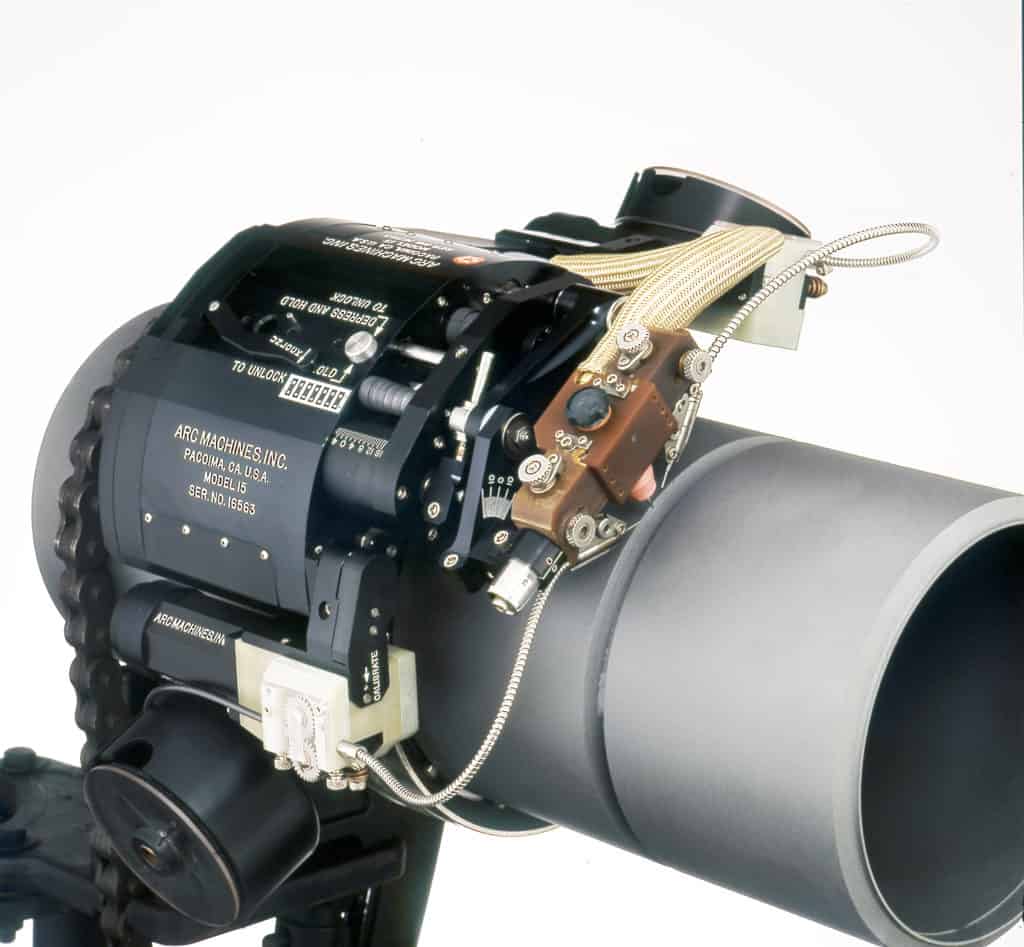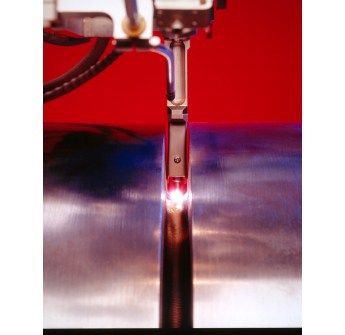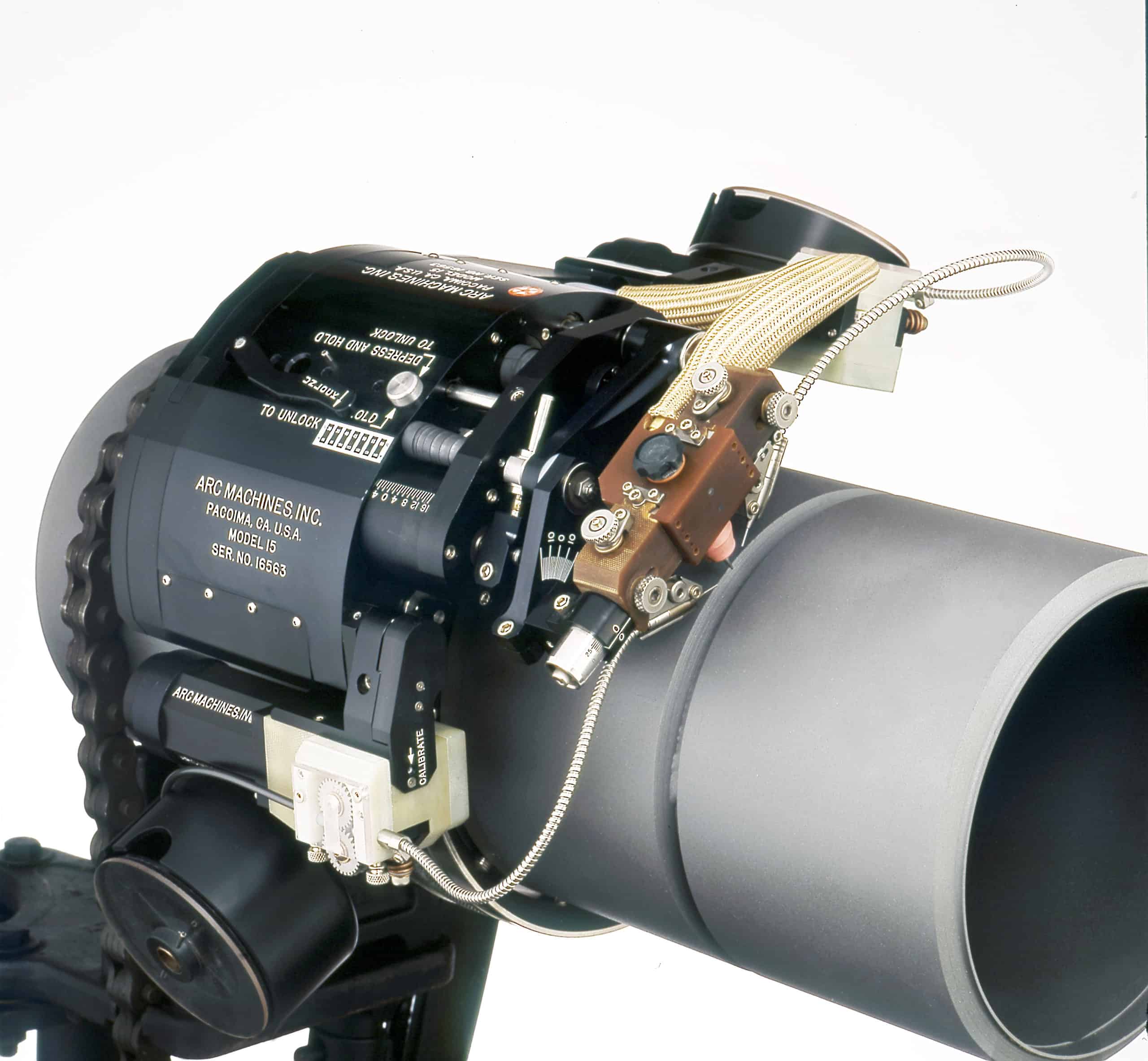
In conversation, it’s sometimes difficult to tell whether the word “welder” refers to a machine or its operator. However, it’s obvious whether a weld bead was laid down by a human or a machine. Automated welding has a level of consistency that even master manual welders can’t match. With machine welds, it’s often impossible to discern individual weld beads. This is especially true in pipe welding, where the nature of the material means that a manual welder must start and stop to change positions. Automated TIG orbital welding has the advantage of being continuous, and given the skill and quality challenges of manual pipe and tube welding, it’s clear that orbital welding is underutilized. Still, there are advantages and disadvantages to orbital welding, and it’s a good idea for any project manager in the development phase of a pipe or tube welding project to consider both before making a decision.
Key Advantages of Orbital Welding
In order to understand the advantages of orbital welding, it is necessary to understand how manual pipe welding is usually performed. It is close to impossible for a manual welder to weld the entire circumference of a pipe in a single uninterrupted pass. Instead, the circumference of a pipe is divided up into quarters, and each pass is completed one quarter at a time. This creates inconsistencies as the arc is stopped and started again. Changing the temperature of the fill material and pipe from hot to cold to hot again multiple times affects the degree of penetration and fusion. The welder must also change position for each quarter of the circumference. Two of those quarters will be in the overhead position, which is widely known as a tiring and difficult welding position.

In orbital welding, the operator mounts the weld head by clamping it to the pipe directly (like a set of vice grips) or by using a guide ring fitted to the pipe. With both methods, the weld head moves around a typically stationary pipe. The operator monitors the weld in case an intervention is needed. Orbital welding offers the following advantages compared to traditional manual pipe welding:
- Consistent Weld Bead Results: Since the weld head moves smoothly and automatically around the pipe, there is no need to stop and restart the weld during the course of normal operation. This improves weld quality by ensuring consistent penetration and fusion.
- Consistent Weld Quality Results: Besides not needing to stop and restart, another significant impact on quality is the consistency of the output of the automated orbital welding equipment, which closely monitors and very precisely controls all the process parameters. As long as the joint preparation and the base material properties are consistent, the orbital solution will precisely execute the pre programmed welding procedure which will lead to consistent results.
- Greater Efficiency: A weld head only needs to be set up one time per weld joint, unlike a manual weld, which requires a change in “setup” on every quadrant for each and every pass. Variations in travel speed, weld current, arc voltage, and the feed rate of fill material are accounted for in the weld schedule entered into the machine. Only minor adjustments to electrode angle may have to be made from pass to pass. This speeds up the welding process, and removes fatigue and discomfort as a factor that can lead to inconsistent welds.
- Ease of Use: Orbital welding machines require the trained operator to understand and be familiar with the machine and know how to set it up. Manual welding, in contrast, requires the operator to be practiced in the particular welding process being used, have experience with the properties of the metals and alloys being welded, and be able to maintain efforts for ten- to 12-hour shifts. It is much easier to obtain a consistent and reliable weld from an orbital system with a properly trained operator.
The result of these advantages is the precision, predictability, quality, and consistency that makes a machine weld so immediately identifiable. And this is true of more than just the visual aspect of a weld. Once a weld procedure from an automated orbital system has been qualified for the structural and mechanical characteristics required by the project, the system will be able to reproduce that quality consistently and be able maintain the tolerances specified in the weld schedule. Any application involving high pressures, corrosive substances, or the need to withstand constant vibrations would see major benefits using an automated orbital welding system.
The advantages of orbital welding and other automated welding processes are so manifest and apply to so many applications that from an engineering standpoint it is surprising that manual welding is still widespread. However, there are some disadvantages to the purchasing, setup, maintenance, and operation of orbital and other automated welding machines.
The Disadvantages of Orbital Welding
The disadvantages of orbital welding have little to do with the welds produced by an orbital welding machine, which are precise and repeatable as long as all variables are taken into consideration. Instead, they have to do with orbital welding being a relatively rare and niche process. As a result, barriers to adopting orbital welding may arise in the following areas:
- Equipment Costs and Service: The power supplies and weld heads required for an orbital welding setup aren’t common. They are built in limited numbers and often for specific purposes, and are therefore more expensive than typical manual welding setups. Specific orbital welding equipment also isn’t available at local building and hardware stores like manual welding equipment is. If a weld head becomes damaged or a controller becomes unusable, it can be more difficult to replace or fix in a timely manner.
- Training: Countless welding programs and vocational schools teach manual welding processes and industry standards. However, few intensive training programs for orbital welding exist, so training on specific equipment is generally offered only by vendors in certain locations.
- Setup Time: Due to the precise nature of orbital welding, setup time is required. In some applications, this setup time may be more than that required for manual welding.
- Consistent and High-Quality Joint Preparation: On most piping welding applications, consistent weld joint preparation is required. Thus, joint preparation equipment and consumables have to be considered and included in the cost of the solution.
Many of these disadvantages are more apparent in smaller projects, where the costs of equipment, training, and setup time may not be worth it. However, in large, repetitive pipe welding projects, orbital welding’s advantages quickly outweigh its disadvantages. The key to getting the most out of an orbital welding setup is to choose an experienced orbital welding vendor that offers training classes on specific equipment as well as reliable repair, replacement, and maintenance services.
The Advantages and Disadvantages of Orbital Welding: Maximizing the Advantages
Arc Machines, Inc. (AMI) allows companies to maximize the benefits of orbital welding by offering training classes at their California headquarters and in several other locations in the U.S. as well as in Europe. Thorough documentation of the company’s equipment is available online so users can ensure AMI welding machines are correctly set up every time. Arc Machines also supports its customers with extended warranties and field service that sends trained service specialists to remote job sites to bring machinery back into operation as quickly as possible. AMI’s trained staff of experienced welding experts understand the advantages and disadvantages of orbital welding, and are ready to help your company make the most of automated welding’s many benefits.
Arc Machines, Inc. products are designed to improve the quality and efficiency of any pipe or tube welding project around the world. For inquiries regarding products, contact sales@arcmachines.com. For service inquiries, contact service@arcmachines.com. Arc Machines welcomes the opportunity to discuss your specific needs. Contact us to arrange a meeting.





